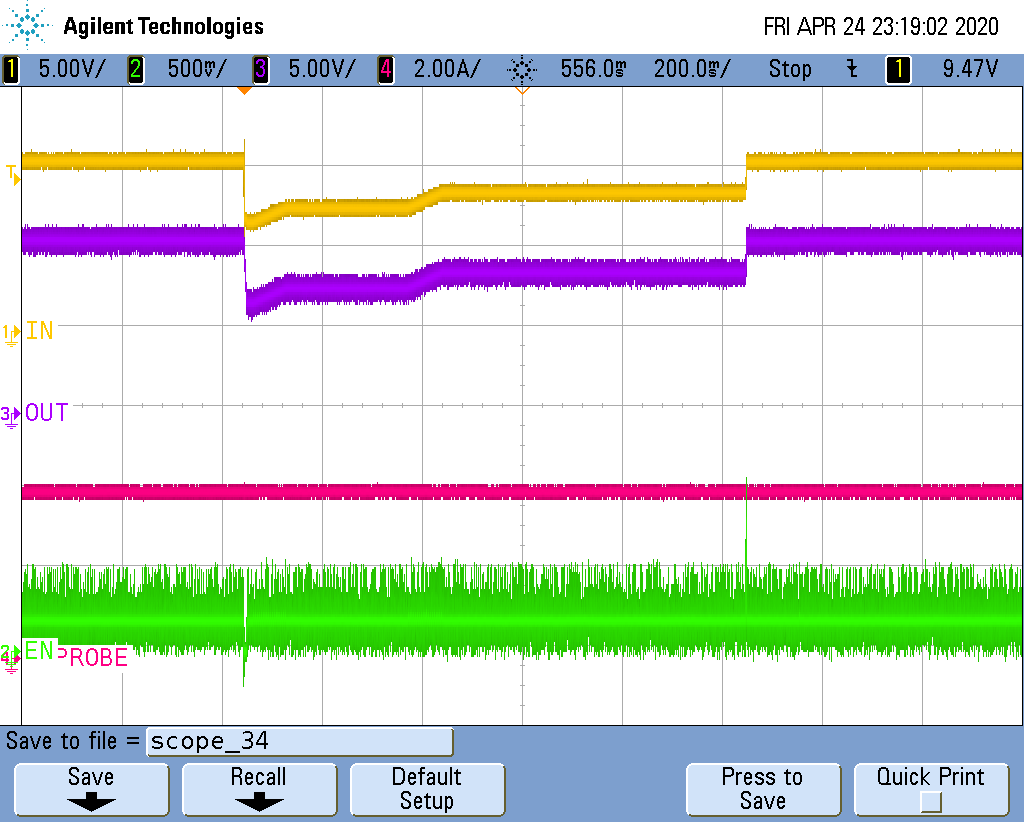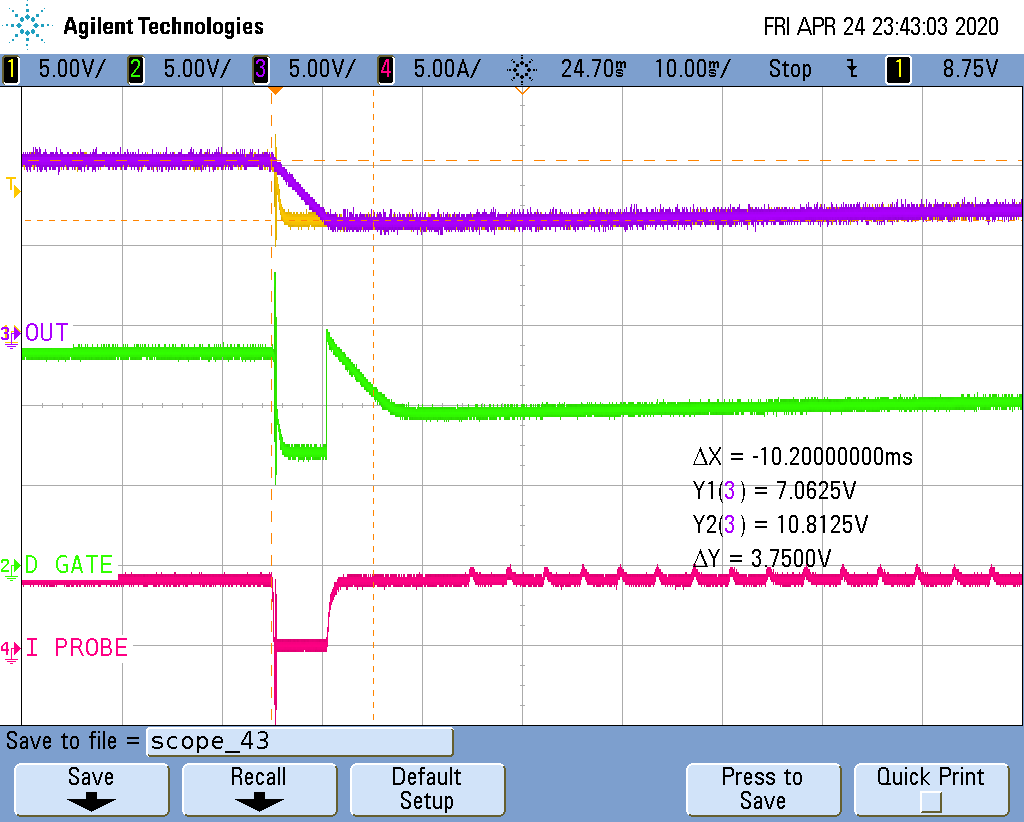JAJU793 October 2020
- 概要
- リソース
- アプリケーション
- 特長
- 5
- 1System Description
- 2System Overview
-
3Hardware, Software, Testing Requirements, and
Test Results
- 3.1
Hardware Requirements
- 3.1.1 Getting Started
- 3.1.2 Testing and Results
- 3.1
Hardware Requirements
- 4Design and Documentation Support
3.1.2.6.2 Warm Start
Warm Start testing is performed to ensure the design functions as appropriate during a warm-start event. Warm Start sees a decrease in battery voltage resulting in the need to ensure the reverse current blocking feature works as intended. As shown in Figure 3-14, the DGATE pulls low when the output voltage is higher than the input voltage to make sure reverse current blocking takes place.
 Figure 3-13 Warm Start/Start Stop
Waveform
Figure 3-13 Warm Start/Start Stop
Waveform Figure 3-14 Warm Start Testing
Figure 3-14 Warm Start Testing